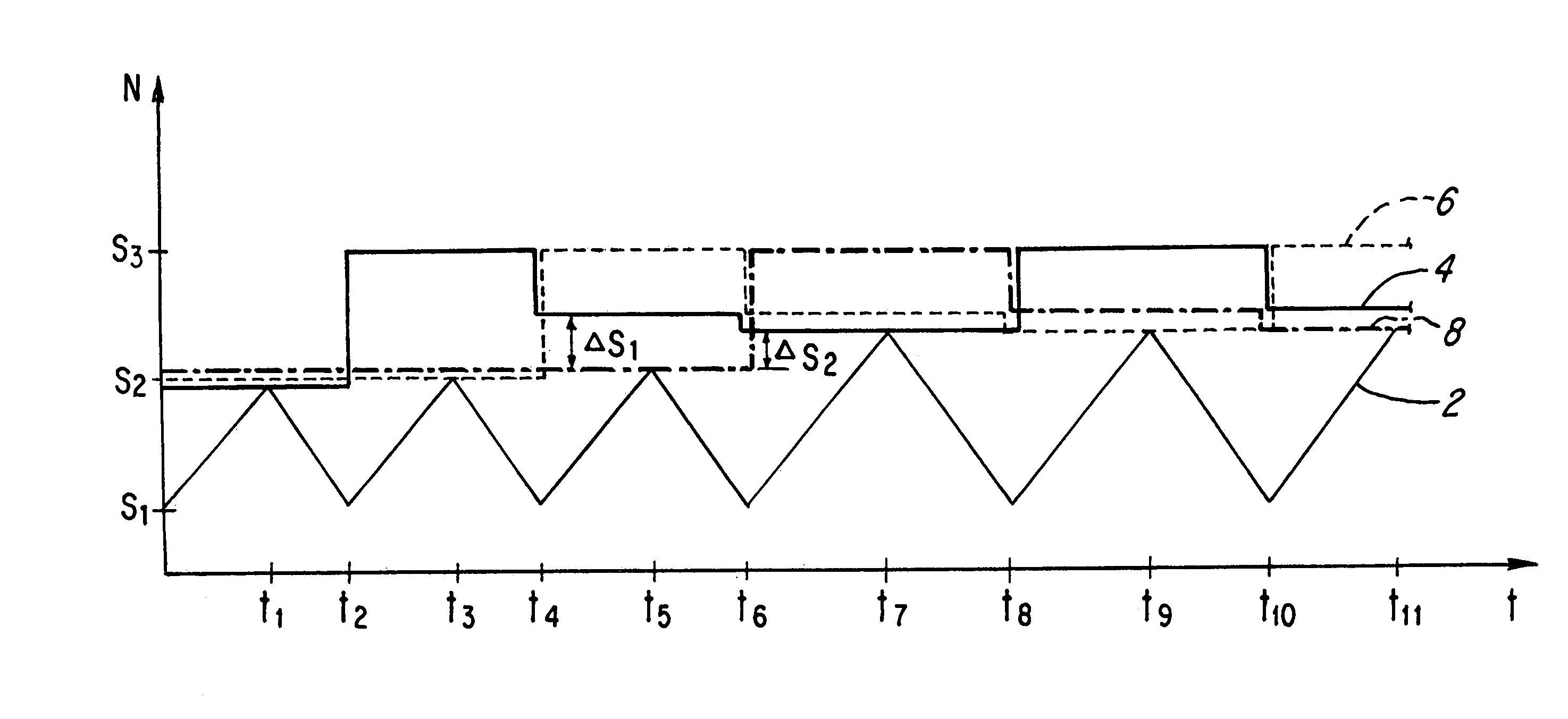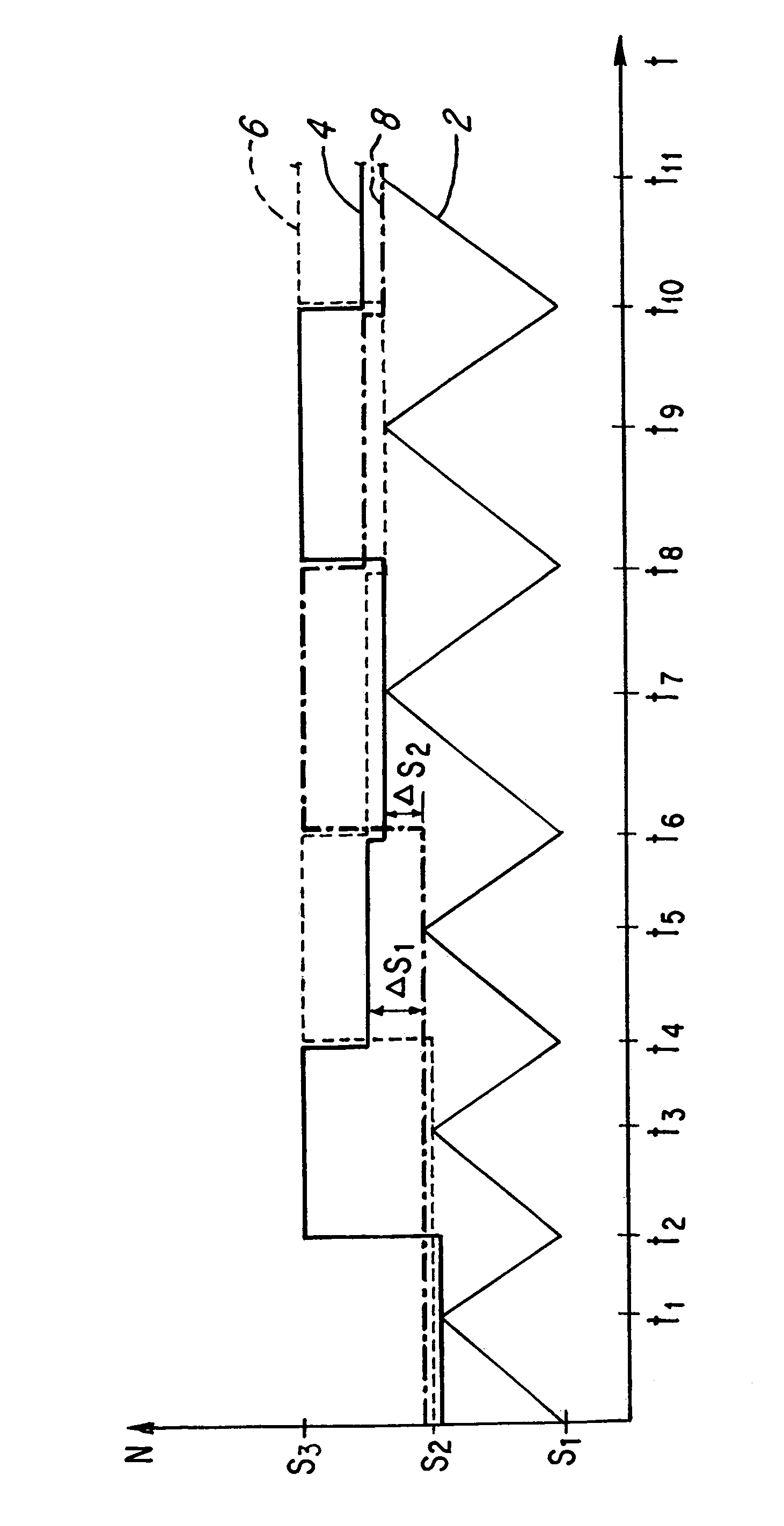Method for controlling several pumps
a technology for controlling several pumps and pumping, which is applied in the direction of pump control, non-positive displacement fluid engine, pump control, etc., can solve the problems of making assembly and operation of the pumps more difficult, and achieve the effect of simplifying and ensuring the control of alternating operation of several pumps
- Summary
- Abstract
- Description
- Claims
- Application Information
AI Technical Summary
Benefits of technology
Problems solved by technology
Method used
Image
Examples
Embodiment Construction
[0029]In the attached diagram there is schematically shown the course of the fluid level N in a pump sump as well as the threshold values of the applied pumps over the time t. The lower unbroken line 2 represents the fluid level in the pump sump over the time t. The unbroken line 4, the dashed line 6 as well as dot-dashed line 8 in each case symbolise the fluid level threshold value of a pump at which the respective pump is activated. In its basic condition each pump has three fluid level threshold values S1, S2 and S3. At the same time the threshold value S2 corresponds to an initial threshold value which is set in the basic or delivered condition of the pump and when it is reached the pump is activated via a level sensor. The threshold value S1 is the threshold value which when reached deactivates the pump. The threshold value S3 represents a second start threshold value at which when reached each pump is in any case activated, independently of the remaining control. S3 is thus an...
PUM
 Login to View More
Login to View More Abstract
Description
Claims
Application Information
 Login to View More
Login to View More - R&D
- Intellectual Property
- Life Sciences
- Materials
- Tech Scout
- Unparalleled Data Quality
- Higher Quality Content
- 60% Fewer Hallucinations
Browse by: Latest US Patents, China's latest patents, Technical Efficacy Thesaurus, Application Domain, Technology Topic, Popular Technical Reports.
© 2025 PatSnap. All rights reserved.Legal|Privacy policy|Modern Slavery Act Transparency Statement|Sitemap|About US| Contact US: help@patsnap.com



